Yes, We Will Clean That.
If you feel bad for the guy who has to clean up this mess, you’ve got the perfect job for ERS.
Nothing fazes us anymore – nothing. We’ll turn that horrific disaster area into a spotless, pleasant-smelling space. Unless you’re at Three Mile Island, we’re your guys. Contact ERS today
Yes, We Will Clean That.
If you feel bad for the guy who has to clean up this mess, you’ve got the perfect job for ERS.
Nothing fazes us anymore – nothing. We’ll turn that horrific disaster area into a spotless, pleasant-smelling space. Unless you’re at Three Mile Island, we’re your guys. Contact ERS today



PROTECT YOUR MIDWEST HOME FROM STORM DAMAGE
THE HAIL WIND, AND LIGHTNING CLEANUP GUIDE FROM ERS
Across the Midwest, storms have been known to cause incredible amounts of damage. Tornados, hail, and lightning strikes can all ruin your home in a matter of hours. Fortunately, ERS provides our disaster restoration for Wisconsin homeowners dealing with storm damage. Follow our guide to best prepare your home for everything from blustery winds to one-in-a-million lightning strikes.
If you are looking for information on flood damage prevention, check out our Ultimate Flood Survival Guide.
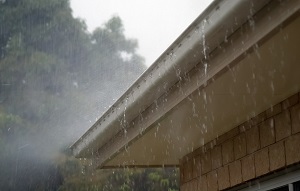
Before the Storm, Be Prepared
Make an emergency kit for your family in the event the power goes out or your home is severely damaged in the course of a storm. Include flashlights, bottled water and non-perishable food, medication, and copies of important documents. You should have enough supplies to get you through a few days if you have to leave your damaged home. By having a kit ready, you’ll have everything you need close at hand during inclement weather.
Consider getting insurance for your home based on past weather in the area. If the area your home is in has had tornadoes in the past, now is the time to check whether you have coverage. Learn about the history of the area to determine if any of the following have occurred:
- Hail Storms
- Lightning Storms
- Violent Thunderstorms
- Tornadoes
- Floods
- Blizzards
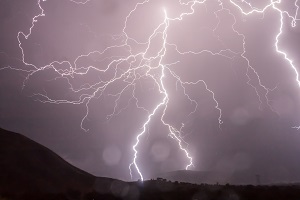
Keep a copy of your insurance documents in your emergency kit. If your home is completely destroyed by a tornado or fire, having these papers at the ready could be the difference between immediate rebuilding efforts and months of waiting for a claim.
Common Storm Problems and How to Prevent Them
You can’t stop the weather itself, but you can take steps to reduce potential damage to your home, vehicles, and possessions. The exterior of your home takes the most damage in bad weather. As a result, the easiest form of damage prevention will be maintaining the roof, siding, and windows of your house before a storm hits. Check for loose shingles on the roof to keep water and hail out or consider using impact-resistant siding to protect against debris and hail. After the storm, ERS provides roof and siding repairs to keep your home intact.
Here are some of the most common issues with simple solutions.
Fallen Branches, Trees, and Power Lines
- Individual branches or whole trees can be knocked over by wind during storms and tornadoes, especially if the tree is dead or dying. The position and angle of the falling tree might mean it has nowhere to go but onto your home. The weight of a heavy branches, let alone an entire tree trunk, can cause an incredible amount of damage. Rooves and porches often take the brunt of the damage, though windows might be shattered by the impact as well.
- Preventative pruning can remove potentially dangerous branches from the path of your home. Be sure to trim trees near your garage and driveway to minimize damage to your cars as well. If you are planning new landscaping, opt for short shrubs and bushes closer to your house instead of tall trees. Consider having older or dying trees removed completely.
- If there is a downed power line near your home, always assume it is still live and do not touch or approach. Wait for emergency services or your electric company to handle the situation. You might have to contact an electrician to restore power to your home after the powerline is restored.
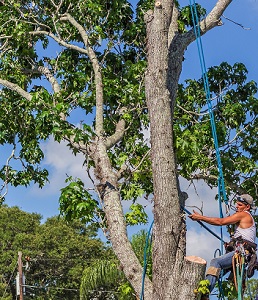
Lightning Strikes
- Houses have a 1 in 200 chance of being struck by lightning during storms, so it’s better to be safe than sorry. Unplug all electronics and major appliances before a storm hits. If you can already see lightening, you should touch any electronic devices which are plugged in since you could be shocked if lightning does strike. If you were unable to unplug everything, don’t worry! Certain surge protectors may be able to protect your electronics from being fried, though direct lightning strikes might be too powerful for one to handle. As a result, it is better to unplug when possible.
- While most homeowners are concerned about fried electronics, there’s a chance a fire could start as a result of a lightning strike. Dry conditions before the storm may increase this risk. If your house is struck, check any areas of the house with flammable materials, such as insulation. If an electrical fire has started, get your family out of the house and follow our fire survival guide.
- A lightning prevention system is one way to stop damage to your home by redirecting potential strikes safely into the ground. Do not attempt to set up a lightning rod on your own. Contact a professional to set up the system to ensure it is grounded correctly.
Hail and Debris
- Hail storms are far less predictable than traditional storms. The conditions necessary for hail are much more rare, though the damage is considerably more. The best way to prevent hail damage is by maintaining your roof and windows. If hail hits a loose shingle, it will likely fall off, exposing the material inside to more hail. There are impact-resistant shingles and siding available which will help your home bear the brunt of hail impact. Park cars in a garage before a storm hits but do not go out until the storm has completely passed to avoid being hit by hail yourself.
- Controlling regular storm debris is far more difficult. Even if your yard is immaculate and well-maintained, garbage from neighboring properties may wind up on your lawn. Small twigs and garbage, if blown with enough force, can chip away at the siding of your home just like hail. Fortunately, the disaster cleanup experts of ERS are available 24/7 to remove debris from your property in the wake of devastating storms and other home emergencies like fire and flood.
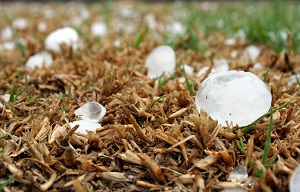
Wisconsin’s Winter Storms Create Unique Problems
For Wisconsin homeowners, blizzards, flash freezes, and ice storms can wreak havoc on your home. Frozen branches and powerlines collapse under the sudden weight of ice while shingles on your roof give way, exposing your attic or insulation to the elements.
To handle these seasonal weather threats, it is important to maintain your home during the rest of the year. Check your roof shingles during the summer and fall months to ensure it is in good shape for the winter.
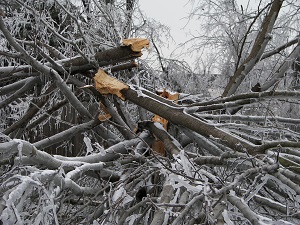
Why Immediate Storm Damage Repair with ERS is a Must
After a storm, the damage to your home may seem superficial. A few missing tiles and some loose trash won’t really hurt anything, right? The restoration experts of ERS know otherwise. Even seemingly superficial damage can be hiding much larger issues for your home. A missing roof shingle can create a leak in your roof which will eventually cause wood to warp, requiring more extensive and expensive repairs down the line. Trash left on your lawn will make yardwork a hassle if it is not quickly removed.
ERS covers everything from debris removal to roof and siding repairs. We will replace your broken shingles, tarring, gutters, and siding to make your home secure again. If a tree has fallen on your home, our tree cutup and removal will safely clean up everything from roots to leaves. We even repair the damage left behind on your home when we’re done. Struck by lightning? Our fire repair services will remove all signs of fire and smoke.
With ERS cleanup and restoration services, your home will be good as new after the storm has passed.



